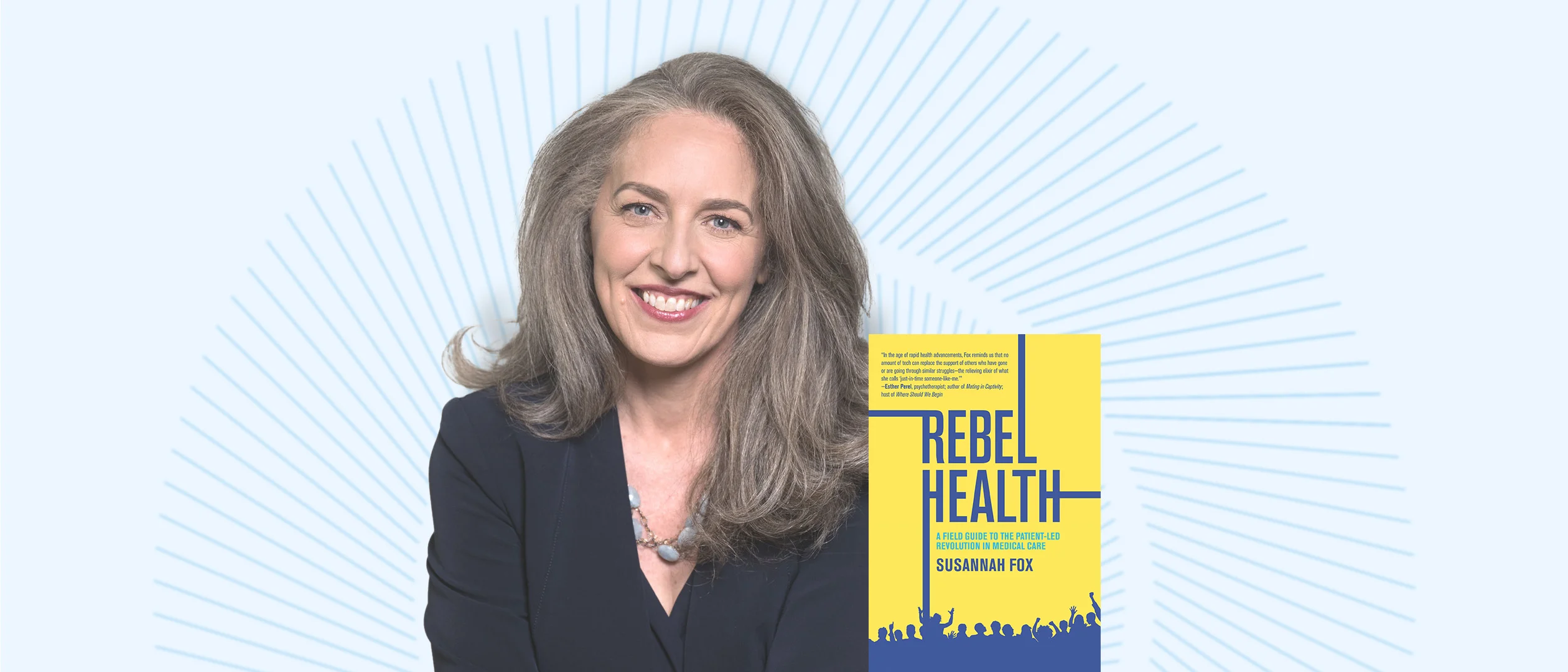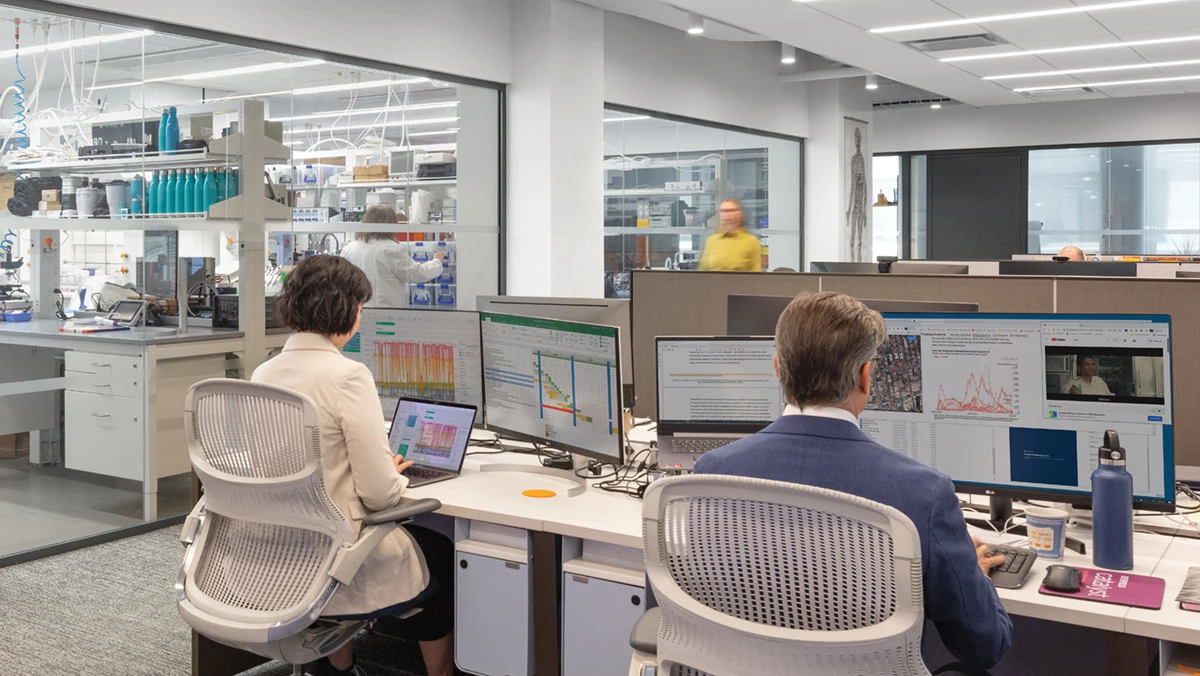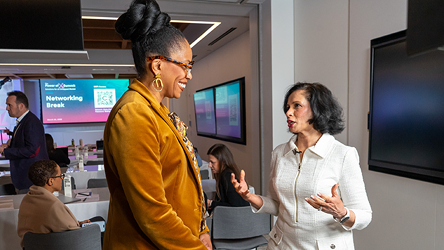February 29, 2024
Article
From Rare Diseases to "Rebel Health": The patient-led transformation of healthcare
View all topics

Overview
In her new book "Rebel Health: A Field Guide to the Patient-Led Revolution in Medical Care," Susannah Fox shares how lessons from the rare disease community are helping patients, survivors and caregivers.
What does it take for patient communities to successfully drive change?
From the advent of AIDS/HIV to today’s long COVID, patient-advocates have led the way to changes in clinical trials, access to medications, improvement in medical devices and more. In her new book, Rebel Health: A Field Guide to the Patient-Led Revolution in Medical Care (MIT Press 2024), Susannah Fox outlines what it takes for patient communities to successfully drive change, and why every organization that touches healthcare should bring them to the table.
“I wrote this book to introduce two powerful groups of people: patients, survivors and caregivers who are creating change, and people with access to mainstream resources, the leaders who don't know that patients are stepping into their power thanks to the internet, thanks to open access to data,” said Fox, a health and technology strategist and former Chief Technology Officer for the U.S. Department of Health and Human Services. “We need that collaboration to heal healthcare.”
Fox began researching online patient communities two decades ago. The internet has since become an ever more powerful tool where people living with rare diseases or life-changing chronic conditions can find each other. Among other things, patient communities offer places to share experiences and ask questions when people feel ignored by their doctors.
But some people go further and use them to change the system. Fox divides these participants in the “patient-led revolution” into four types — all of them necessary for success. “The first type are seekers,” she explained. These people are not getting the answers that they need, so they go out on a hunt for information. The second group are networkers, and they are the most visible. They form Facebook groups, they create hashtags on Twitter, they gather resources, and they also disseminate the best of the resources that they find. The third group are solvers, people who will attack a problem if something is not working for them. They will take it apart and put it back together again, whether it's a medical device or a system. And the fourth group are champions — people who have access to mainstream resources like funding, regulatory guidance, access to labs and access to materials.
To illustrate, Fox takes the example of the first continuous glucose monitors for people with type 1 diabetes. The devices were a life-changing innovation — patients could avoid finger sticks. But they didn’t go far enough, especially for parents managing their children’s type 1 diabetes. The problem was that data could not be shared from the devices. The parent had to read it. That meant getting up several times during the night, and not being able to remotely watch blood sugar levels in a child at school or day care.
“Then a dad hacked into his son’s CGM, freed the data and sent it to his Apple watch,” said Fox. “So, he's a solver. And because there was this very strong network on Twitter, he shared how he did it on Twitter, and the networkers took over and it spread worldwide” to people researching how to do it. “That's seekers, solvers and networkers working together.”
Hacking a CGM was a solution only for people willing and able to do it. For mainstream change, “you need the American Diabetes Association. You need Dexcom, you need Medtronic, you need the FDA,” said Fox. “And you need another type of solver, someone who understands how to go about the policymaking sphere.”
As her career advanced, Fox realized that many corporate executives and policymakers were not aware of the ways patients can drive innovation. Fox, a former Chief Technology Officer for the U.S. Department of Health and Human Services, served as the entrepreneur-in-residence at the Robert Wood Johnson Foundation and directed the health portfolio at the Pew Research Center’s Internet Project.
Fox said, “One of the reasons I wrote the book is to advocate that every single organization that touches healthcare, whether it's a government agency or a company or a nonprofit, needs to have an intake valve for insights directly from patient survivors and caregivers. It's not good enough anymore to have one or two patients who advise you. You need to involve patients at every step of your business.”
For startups, Fox had further advice: “There is so much suffering happening outside the view of mainstream healthcare. It's difficult to express it except to say that suffering is also opportunity, and there's an opportunity to create treatments for conditions and diseases that have been forgotten. When a radical health movement creates something new and it moves into the mainstream, that's where startups can look for emerging trends in patient-led groups and give them resources.”
Read an excerpt from Fox's book:
Seekers sense that something is not right with their health and decide to take action. Maybe a diagnosis has dropped them into a maze filled with new terms and treatment options. Maybe their symptoms are mysterious, their worries are deep, and clinicians are not able to answer their questions. Seekers set to work, often hopeful but also often angry and frustrated.
Seekers go out on the hunt.
……………………………………………………………………………………
When Burt Minow was born in 1922, his disability—partial hearing loss and complete facial paralysis—was immediately apparent. His mouth was frozen in a sort of frown, and he could not drink like a typical baby. Doctors advised his parents to put him in an institution and forget about him. But his mother had an indomitable spirit. His parents took him home, found a way to feed him, and raised him alongside his younger siblings.
When it was time for Burt to go to school, his mother forced the school system to take him, confident that he could handle the work despite his limitations. He succeeded, eventually graduated from college, and enjoyed a long career in the family laundry and dry cleaning business in Milwaukee, Wisconsin. His niece, Nell Minow, recalls that her Uncle Burt “was dearly loved by all of us for his witty poems and loyalty to underdogs of all kinds, especially the Chicago Cubs.”
Unfortunately, few people outside his family attempted to communicate with Burt. He couldn’t move his lips when he spoke, so talking with him was like talking with a ventriloquist. And it was difficult to get used to looking at someone whose facial expression never changed.
Because Burt’s condition was so rare, it was not until many years later that he even had a name for it: Moebius syndrome. It is a neurological condition affecting the sixth and seventh cranial nerves, which control a person’s ability to smile, blink, suck, and move their eyes side to side. For some people, it affects the form of their hands and feet, requiring surgery or other interventions.
When Nell began using the internet in the mid-1980s, she realized that if her uncle went online, he could finally have relationships that were not limited by his disabilities. She set him up with an account, and he began communicating with people who shared his affection for the soap opera Days of Our Lives. On the screen, represented only by text, Burt’s wit could shine. A few years later, as the web developed, Nell tested new search engines by typing in arcane terms just to see what came up.
One day she got a hit on a search for “Moebius syndrome.” A family with a young child with Moebius had created a website and located hundreds of people around the world with the same diagnosis.
When Nell emailed them about her Uncle Burt, they immediately wrote back, asking his age. At the time, the medical literature was quite limited and had no record of anyone with Moebius living past their thirties. For all they knew, that was what they could expect for their child. When Nell wrote back that Burt was in his seventies, the family rejoiced and started spreading the word.
That day, hundreds of families heard, for the first time, that their loved ones could have a typical life span. And Burt Minow heard, for the first time, that there were other people like him.
As Nell says, “For the last year of his life, he was the elder statesman of a very small but very excited community, and it would not have been possible without the web.”
People with Moebius are an extreme example of a common challenge: to find people who share the same concerns, frustrations, and hopes for a better way of doing things. This extremely rare condition—affecting fewer than one in 300,000 or even one in a million by some estimates—has no known cause or cure. Before the internet, people like Burt Minow were unlikely to ever connect with someone else with Moebius. They and other people with rare conditions were completely alone in their struggle.
“But rare isn’t so rare when there are one hundred of you,” says Natalie Abbott, who lives with the condition, when describing an in-person Moebius conference. “Instead of hope for a cure, for me and others with incurable conditions, hope is the state of mind fostered by a strong community who knows and accepts the fact that not all things in life can be cured. Hope comes through connections, resources, strength, and time, instead of in a pill. But hope is as valuable as a cure.”
Seekers embody hope and action. They try one more search term, call one more clinician, or reach out to one more friend for help. Like Nell Minow, they are often acting as proxies for a loved one. Like Abbott, they may be looking for community, not a cure. The health care system works best if everyone facing a challenge either has a Seeker on their team or becomes one themselves. Seekers go out on the hunt.
Excerpted from Rebel Health: A Field Guide to the Patient-Led Revolution in Medical Care by Susannah Fox. Reprinted with permission from The MIT Press. Copyright 2024.




